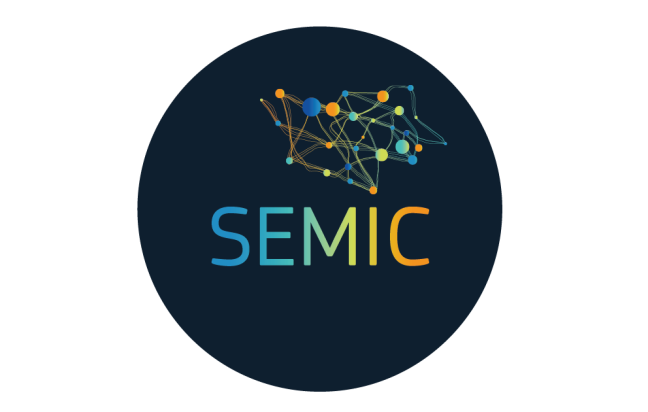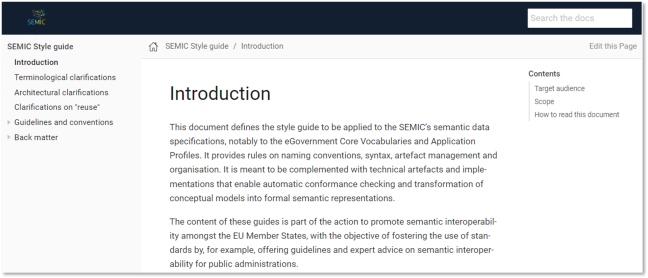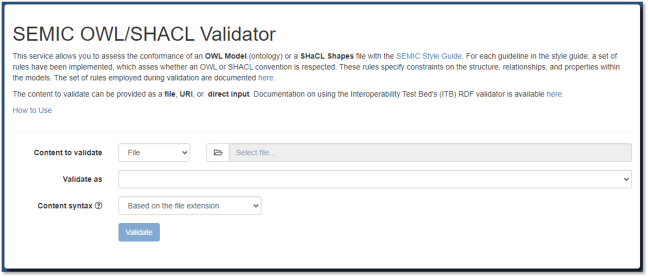

In collaboration with the Interoperability Test Bed, SEMIC has launched a new validator for the validation of OWL vocabularies and SHACL shapes to ensure their alignment with the SEMIC Style Guide.

The mission of SEMIC is to foster semantic interoperability through the definition of common semantic specifications and the sharing of knowledge and best practices on their application. The SEMIC Style Guide is an important tool in this effort as it defines guidelines for semantic engineers, helping them extend and reuse SEMIC specifications such as the eGovernment Core Vocabularies to address their specific semantic needs.

To complement the Style Guide, the SEMIC team published in November 2023 a validator for UML models that allowed experts using the Unified Modelling Language (UML) for the modelling of their specifications, to validate their models with respect to the Style Guide’s rules. This validator represented a first step in providing a toolbox in support of semantic engineers, that is now extended with a new validator for OWL vocabularies and SHACL shapes.
This new validator focuses on validating RDF content – be it an OWL model or set of SHACL shapes – against the Style Guide, applying rules that assess each of the Style Guide’s guidelines. It complements the previously published UML validator focusing on the models’ eventual RDF output, but also provides an alternative to semantic experts that opt to model their specifications directly in RDF.

The new validator is built over the Test Bed’s reusable RDF validator. In the same way as all validators based on the Test Bed’s core validator components, the validator enables validation of RDF content over multiple APIs, specifically:
If you are interested in seeing how the SEMIC Style Guide validator was built, and potentially in following a similar approach for a new validator, you are invited to check out the Test Bed’s step-by-step RDF validation guide. In fact similar guides exist for validators based on other common syntaxes, notably XML, JSON and CSV. Regarding the Test Bed itself, general details on its services can be found in its Joinup space, with its value proposition being a good starting point for newcomers. Remember to also subscribe to the Test Bed on Joinup to stay updated on its latest news and releases.
The Interoperability Test Bed is a service provided by the European Commission’s DIGIT, offering conformance testing and validation solutions in support of IT systems’ cross-border interoperability.